In the Studio
In the Studio With Cj Hendry
See a 360-degree video of the New York-based artist Cj Hendry at work as part of artnet's "In the Studio" series.
See a 360-degree video of the New York-based artist Cj Hendry at work as part of artnet's "In the Studio" series.
Artnet News

To an outside observer, the creation of a work of art can seem like a magical process, with the artist dreaming up a concept and then transmuting it from pure ether into an inspired tangible object. But while the artwork can seem effortless when seen in its finished form, it is in fact the product of trial and error, honed skills, experience, and, in many cases, significant physical exertion—all taking place in the private laboratory that is the artist’s studio. Now, artnet News has teamed up with Dobel Tequila to present the “In the Studio” series, providing a rare glimpse inside this mysterious process with the help of 360-degree video technology. We chose artists who combine technical virtuosity with a relentless appetite for invention. Each has mastered a seemingly traditional medium—from painting to weaving to drawing—in order to take it somewhere entirely new.
Australian artist Cj Hendry’s path to the art world was anything but traditional. She didn’t go to art school, and she doesn’t have a gallery. She studied architecture and then embarked on a path toward accounting and finance at university, but decided that none were a good fit. A few years ago, the now 30-year-old decamped to Greenpoint, Brooklyn, from Brisbane, and began to pursue what felt like her real passion: drawing.
Now, Hendry releases a series of her uncannily photorealistic drawings about once or twice a year. Her rise to renown has been swift, and driven not only by her technical skill but also by her canny knack for self-promotion. She established an Instagram account around the same time she committed to pursuing a career as an artist, and now has more than 325,000 followers. There, she posts videos of graphite sketches springing to life, images of colorful paint dabs forming via painstaking colored-pencil marks, and even a look behind the curtain at her graveyard for broken pencils and laborious pencil-sharpening process.

Cj Hendry’s “Color Pencil Graveyard.” Courtesy of the artist.
Her subjects range from luxury and consumer products like Puma sneakers and Oliver People’s sunglasses to brilliantly rendered daubs of paint and photorealist renderings of Andy Warhol polaroids. Like Warhol, Hendry transforms the mundane or the consumer into the monumental. And she shares the Pop artist’s skill for capitalizing on celebrity: She gained a publicity boost when she met Kanye West backstage at a concert and gave him a $100 bill with his face on it—and then cannily snapped a photo as he graciously accepted it.
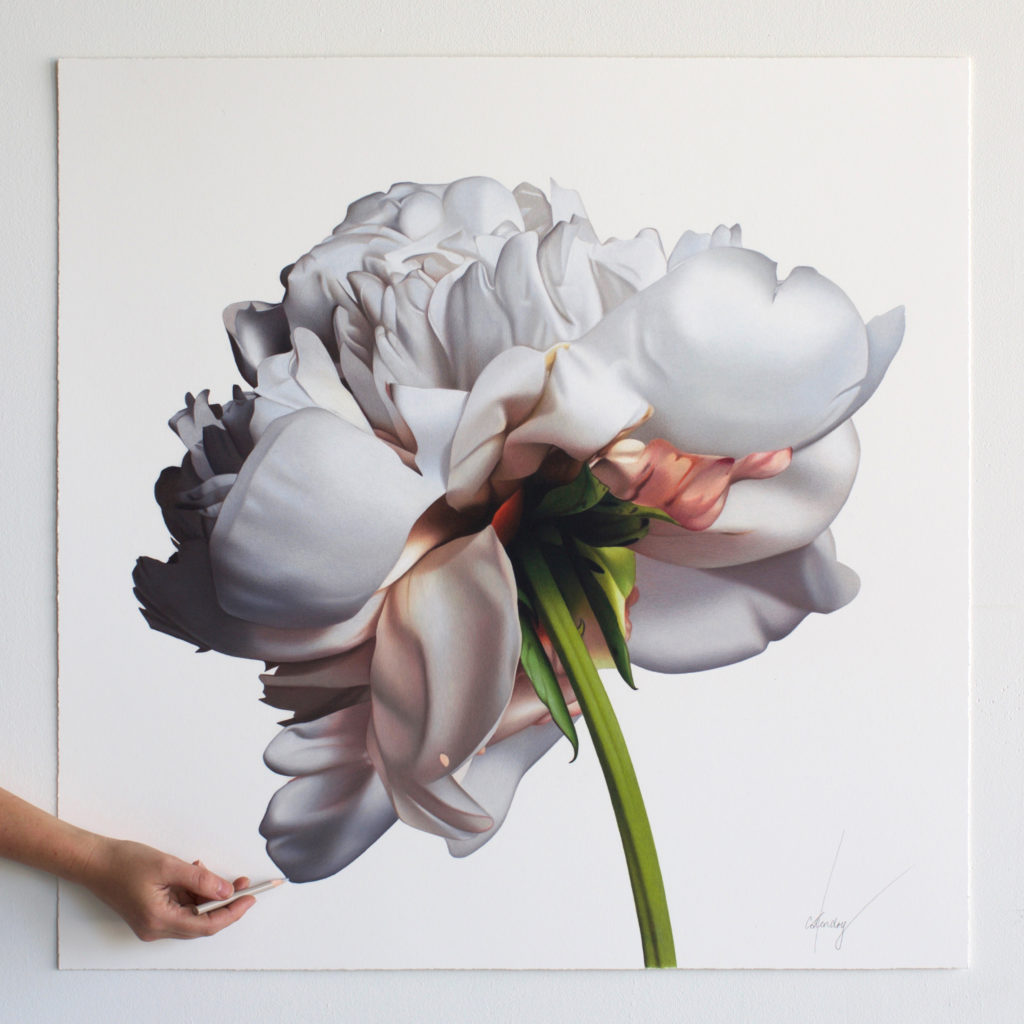
Cj Hendry, Flower (2018). Courtesy of the artist.
Now, she sells most of her work on Instagram and has developed a solid following of collectors. (A former classmate from Australia acts as her studio manager and sometime agent.) Hendry says she likes to funnel the money she makes from her drawings back into major projects such as MONOCHROME, a 10,000-square-foot highly stylized home she designed inside a commercial warehouse in Greenpoint, not far from her 5,000-square-foot studio. Inside the enclosed space, the artist created several interconnected and color-saturated, monochromatic rooms, each inspired by drawings of crumpled-up Pantone swatches. Every single object—floors, walls, pillows, toys, clothing, and even the toilet paper in the purple bathroom—are of the theme color.
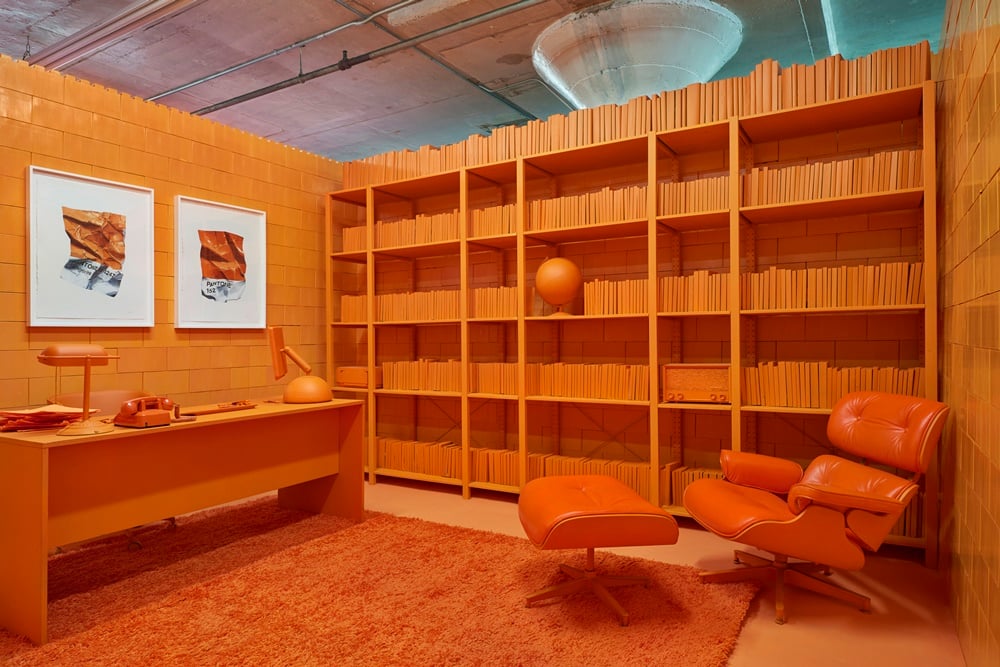
Cj Hendry, Monochrome. Photo by Andy Romer.
She has now begun bringing her vibrant, Instagram-friendly work global. In 2017, she collaborated with high-end shoe designer Christian Louboutin in Hong Kong for an event that coincided with Art Basel Hong Kong. “Complimentary Colors” featured a rainbow of heels and Hendry’s hyperreal drawings of vividly colored large dabs of paint. Custom-made “crayons” on shoe soles allowed visitors to add their own markings to the walls.
But all this globe-trotting is powered by plain old hard work and elbow grease in Hendry’s Greenpoint studio. Here, watch a 360-degree video of the artist at work, and read an interview about her labor-intensive approach to making art.
You make artworks that at first seem to be photographs, but upon closer inspection reveal themselves to be remarkably precise photorealistic drawings. Some of your drawings are quite large, and obviously very time-consuming to make. How long does a typical drawing take to create, and how important do you think that time and care is to the finished product?
Works can take anywhere from two to three weeks to two to three months to make. I work seven days a week, generally 16-hour days, to produce my work. All of my works require an extreme amount of focus—more focus than most people could imagine. I think that focus is more important than the time itself. The type of art I create is extremely time-intensive, but that is just part of my practice. I am so jealous of the artists that can create a work in a matter of hours. In my next life, I am certainly going to be artist that doesn’t create hyperrealism.
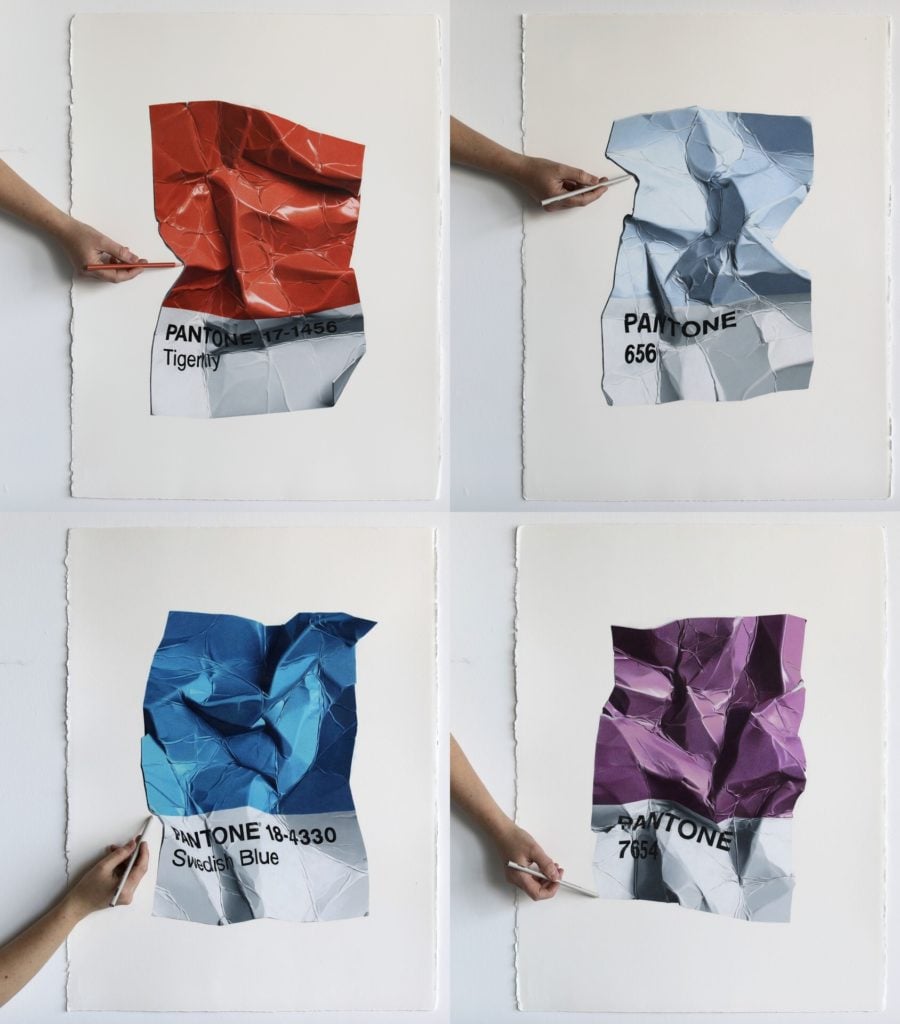
Cj Hendry, Pantone 1-4 (2018). Courtesy of the artist.
You’ve made drawings of everything from crumpled-up Gucci and Chanel shopping bags to a plate of glazed donuts to a $100 bill with Kanye West’s face on it (which he bought) to fancy sneakers and shoes to hyper-trompe-l’oeil smears of colored paint. While sometimes you draw everyday objects (those donuts, for instance), often your images are drawn from the world of luxury fashion and consumer products. How do you decide what to draw, and how do you approach the luxury products you represent? Is there a critical angle?
Quite the opposite! I am not at all criticizing consumerism or materialism, but celebrating it! We don’t need to go into the whole is fashion-vs.-art debate, but some pieces at luxury brands are just so beautiful and have been so carefully constructed and mastered. Whilst I will always love my luxury fashion, I am becoming more and more interested in other objects. I think some people could have viewed the MONOCHROME exhibition as a critique of Pantone, but it was once again, quite the opposite—the crumple was to give depth and meaning to these beautiful colors.
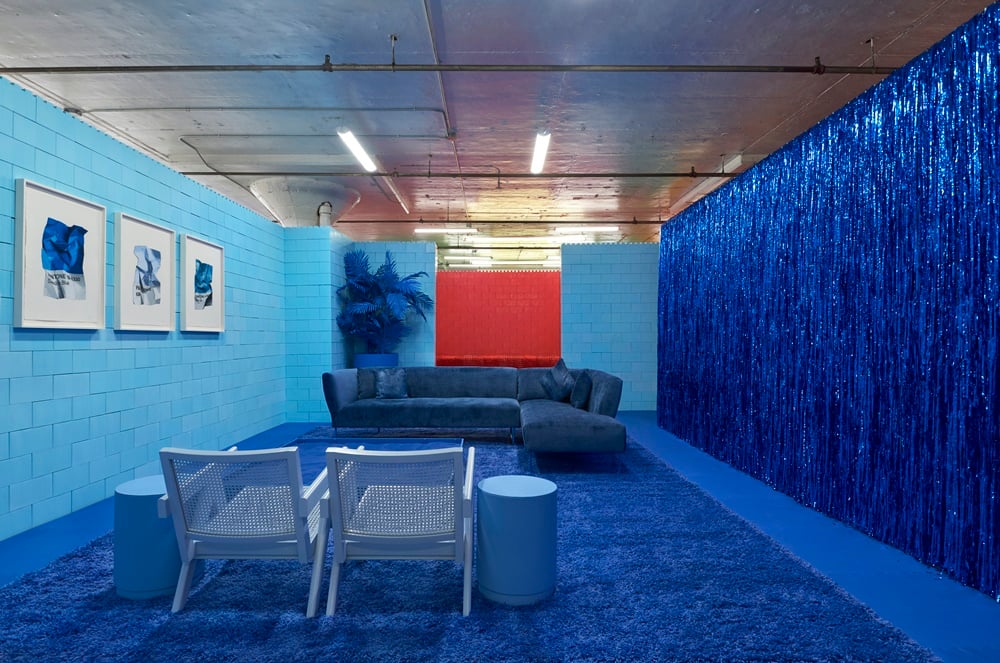
Cj Hendry, Monochrome. Photo by Andy Romer.
What are the two or three most indispensable items/tools in your studio, and why?
Number one is my Bose noise-cancelling headphones. My father gave me a pair when I was first starting my art career and I have barely taken them off since. Everyone on my team has a pair, so it looks like we are at a silent disco all day at work. I also can’t work without my Diet Coke. I limit myself to two a day, but I could honestly drink about 10. Lastly, my phone or iPad to watch series or listen to podcasts while I work. I also listen to the Harry Potter books on tape again and again—I am a big J.K. Rowling fan.
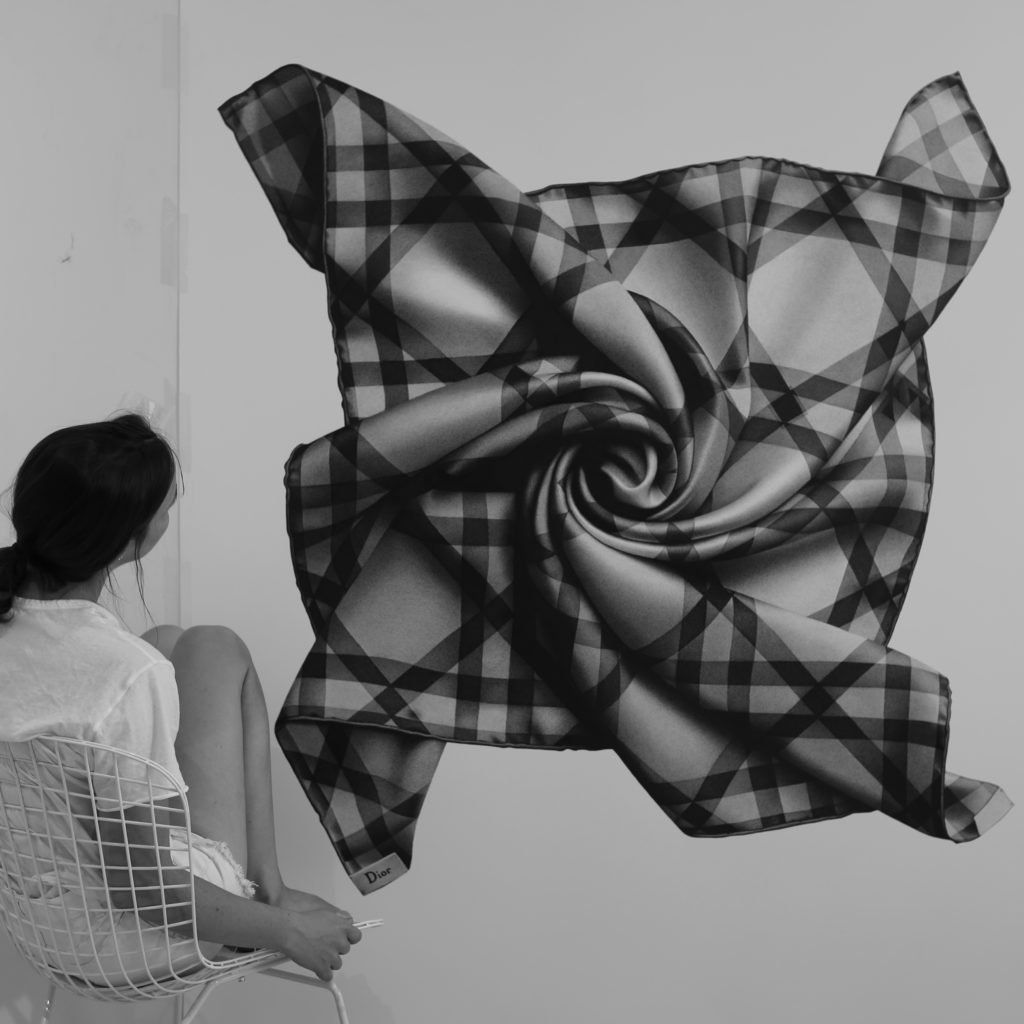
Cj Hendry’s work, ca. 2015. Image courtesy of the artist.
When do you like to go to your studio? What is the first thing you do when you arrive, and why?
I usually arrive to the studio at 7:30 a.m. every morning after taking my Labradoodle to the park. I usually skip breakfast, but all my other meals are eaten at the studio. It all depends what I need to do that day—there are always about 1,000 things to do, but I generally start the day and end the day with drawing. I get a few hours in the morning and the evening when I have the studio to myself so I can draw uninterrupted.
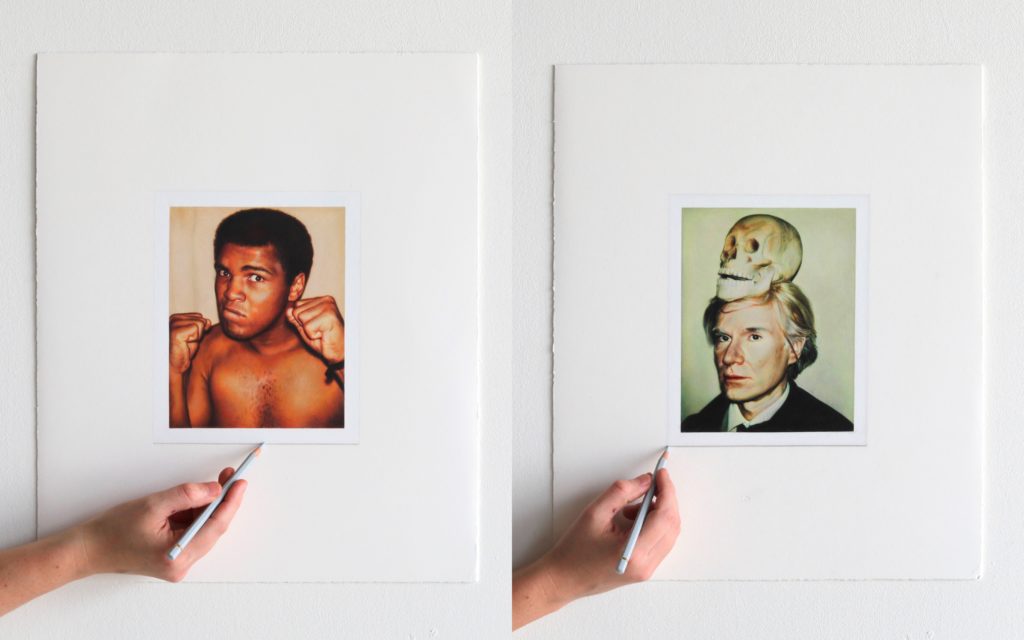
Cj Hendry, Warhol (2018). Courtesy of the artist.
What kind of atmosphere do you prefer when you work? Do you listen to music, talk to your assistants, prefer silence? Why?
Well, it would be silence to anyone walking into the studio because everyone is listening to or watching whatever they want using their headphones. Everybody works differently and that’s why we don’t just have background music going in the studio. Doesn’t everyone work better when they aren’t interrupted or distracted?
How do you know when an artwork is finished?
In my practice, I always draw from a photograph. My process is very methodical and I guess I am finished when it looks like the photograph.